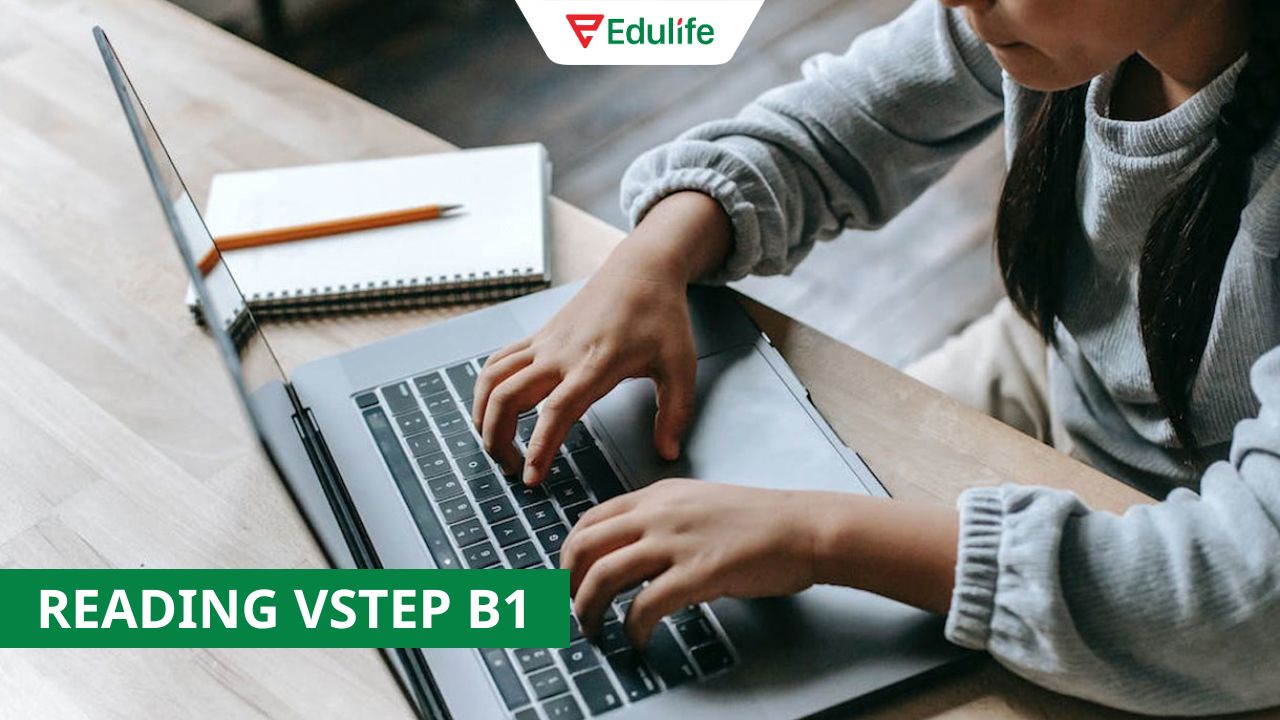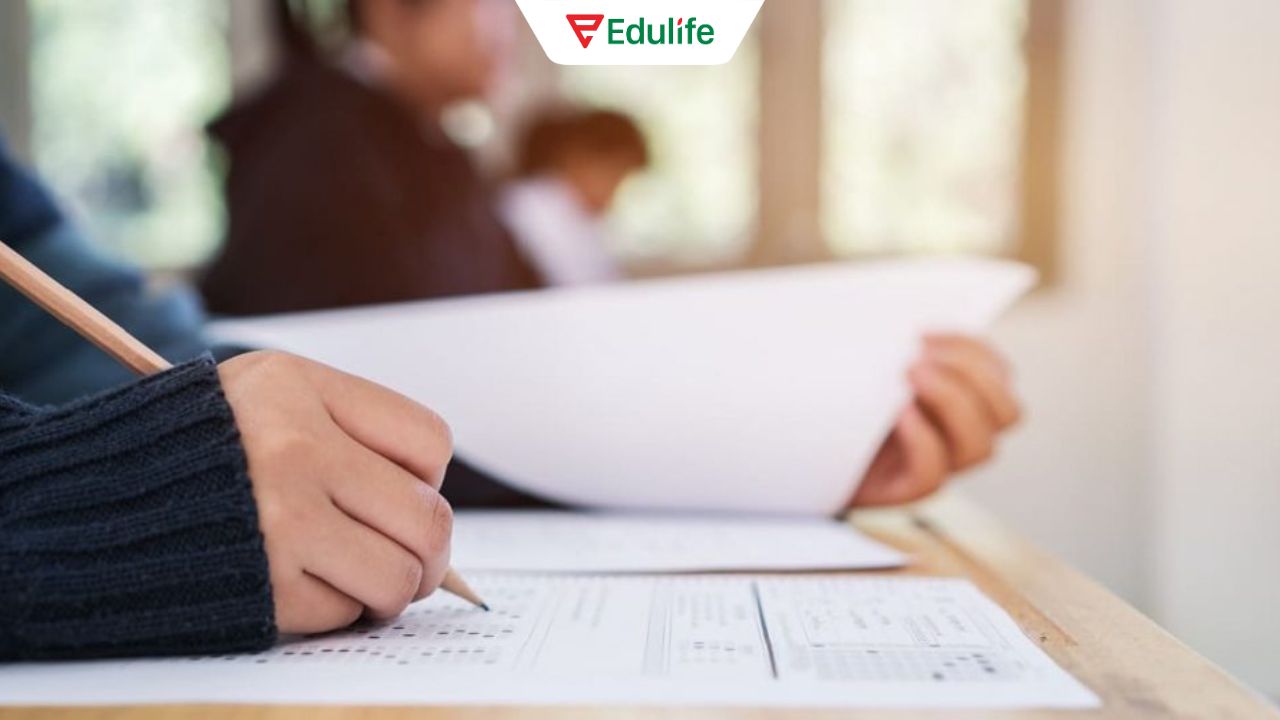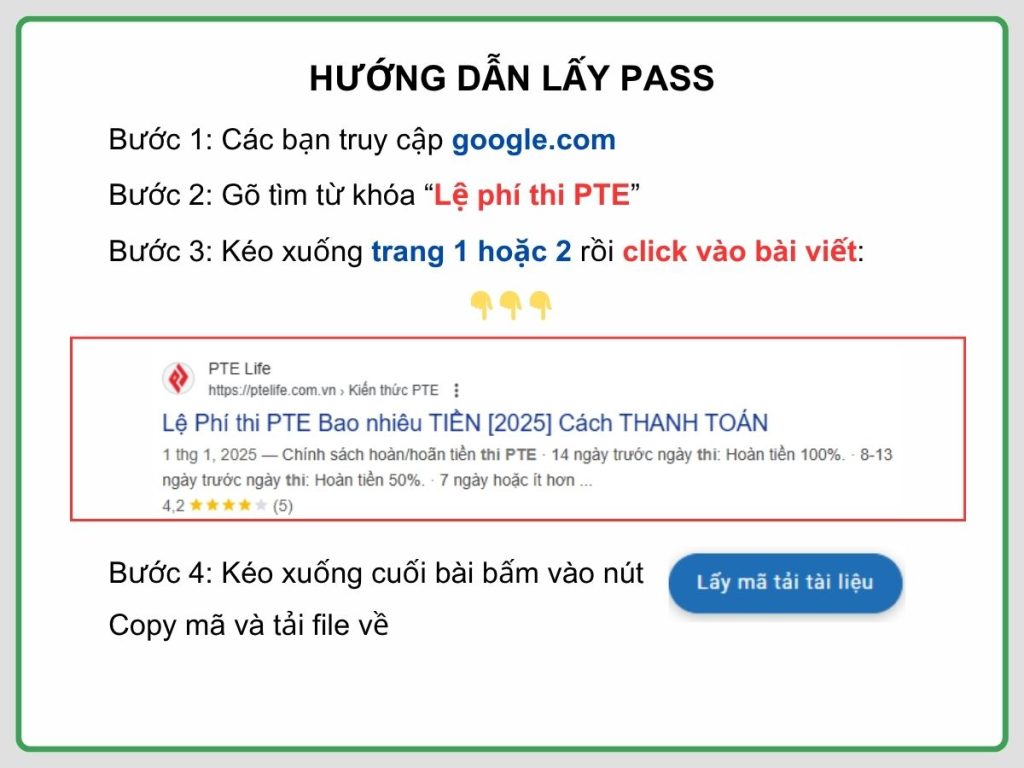Chinh phục kỹ năng đọc hiểu VSTEP B1 là một trong những mục tiêu quan trọng nhất khi bạn tham gia kỳ thi VSTEP. Đây là phần thi kiểm tra năng lực ngôn ngữ chuyên sâu, và để đạt được chứng chỉ trình độ B1, việc ôn thi đọc hiểu B1 một cách bài bản là điều kiện tiên quyết. Hãy cùng Edulife khám phá chi tiết cấu trúc, các dạng bài và chiến lược luyện thi hiệu quả nhất.
Tổng quan về phần thi Đọc hiểu VSTEP B1
Phần thi VSTEP Reading B1 được thiết kế để đánh giá năng lực đọc hiểu tiếng Anh của thí sinh một cách toàn diện, từ việc nhận biết thông tin chi tiết đến khả năng suy luận ý chính của cả đoạn văn (passage). Kỹ năng này không chỉ quan trọng để hoàn thành bài thi năng lực tiếng Anh theo Khung năng lực ngoại ngữ 6 bậc Việt Nam mà còn cần thiết cho việc học tập và công việc sau này.

Cấu trúc chi tiết đề thi VSTEP Reading B1
Nắm vững cấu trúc đề thi VSTEP là bước đầu tiên để xây dựng kế hoạch ôn tập hiệu quả. Dưới đây là bảng tổng hợp 4 phần của bài thi đọc hiểu, giúp bạn hình dung rõ các dạng câu hỏi trắc nghiệm (multiple choice) mình sẽ đối mặt:
| Phần thi | Nội dung câu hỏi | Thang điểm | Thời gian |
| Phần 1 | Gồm 10 câu hỏi, mỗi câu có một chỗ trống cần điền từ. Thí sinh chọn đáp án đúng từ 4 lựa chọn (A, B, C, D) dựa trên kiến thức từ vựng, ngữ pháp và ngữ nghĩa | 10 điểm | 60 phút |
| Phần 2 | Bao gồm 2 dạng bài, mỗi dạng có 5 câu hỏi:
| 5 điểm | |
| Phần 3 | Đọc một đoạn văn dài 200 – 250 từ và trả lời 5 câu hỏi theo hình thức Đúng/Sai hoặc trắc nghiệm 4 đáp án (A, B, C, D). | 5 điểm | |
| Phần 4 | Đọc đoạn văn dạng Cloze Test dài khoảng 150 từ với 10 chỗ trống. Thí sinh chọn 10 từ phù hợp trong 15 từ đã cho để hoàn thành đoạn văn. | 5 điểm |
Các đoạn văn trong đề thi thường khai thác những từ vựng theo chủ đề quen thuộc như giáo dục, sức khỏe, du lịch, môi trường hoặc công nghệ, giúp thí sinh dễ dàng liên hệ với kiến thức nền của mình.

Luyện tập với bài đọc VSTEP B1 mẫu (kèm đáp án)
Cách tốt nhất để làm quen với định dạng thi là giải đề VSTEP reading B1. Hãy dành 15 phút để hoàn thành bài tập đọc hiểu dưới đây và tự kiểm tra kết quả với bảng đáp án chi tiết ở cuối bài. Đây là một tài liệu ôn thi VSTEP reading B1 miễn phí và hữu ích.
Đề bài
Indian rail travel is unavoidably dirty, and a balance must be struck between having the window shutters open to see the countryside and closing them against the heat and dust.
The air-conditioned carriages are generally comfortable, and the train catering manager takes orders, which he passes by phone to the next stop but two, where the food comes aboard in metal dishes. An excellent vegetarian meal of two curries, rice, pickle, nan bread, poppadoms and lassi was more than enough for my wife and I, and did not break the bank at 16 rupees (35p), although it was a fingers-in-the-dish exercise if you didn’t have your own knife and fork. Rice plantations in the heat of the day gave way to cotton and maize fields in the evening, where farm workers stood on high stools cleaning the rice.
Our shower, breakfast and bed in the West End Hotel at Bangalore were never more welcome. The silks, silk shirts and ties in Mahatma Gandhi Road are irresistible when offered at half, or sometimes even a third of European prices, and comfortable, well-made leather sandals are of an equally good value.
The drive to Mysore took us via a silk farm, and families of monkeys began to appear at the roadside as the country became wilder. The Sultan Tipu’s summer house outside Mysore is a spacious monument to 19th century good taste, but it sinks to one-star status in comparison with the Maharajah’s main palace in the town. Overwhelming in size and splendour, endless wealth has been spent on it over the years for the best that money could buy anywhere on earth. Its 100,000 lightbulb outline illumination is equally impressive after dark, and was extended for an extra half-hour at – presumably – the taxpayer’s expense, in honour of the Indian Finance Minister’s visit the night we were there.
Our driver broke the onward journey south at an ancient Hindu temple where we were warmly welcomed to join the service. After crossing the border from Karnataka into Kerala in the Mudumalai animal reserve, the road started its long climb into the hills. Through eucalyptus woods and tea plantations – the higher the crop, the better its quality – the air became cooler, the roadside greener and the lakes more frequent.
We reached the Fernhill Palace Hotel at Udagamandalam (Ootacamund, otherwise known as ‘Ooty’) in the early afternoon, left our driver and his car and, as if in a time machine, stepped back 60 years. Empty apart from ourselves and another couple, this former Maharajah’s residence was a ghost house of faded colonial gentility. The ballroom with its padlocked grand piano, the drawing room, the dining room, the billiard room, the bar and the Maharajah’s suite were all designed on the grand scale of half a century ago. Photographs along the corridors show the bursting self-confidence of Ooty’s expatriate society between the wars; today, they present a dusty canvas of distant memories.
1. When travelling on an Indian train,
- it is hard to keep the windows open because they are not balanced
- it is hot and dusty if the windows are closed.
- you will get hot and dirty if you want to see the views.
- the windows are very hot and dirty.
2. According to the passage, what is true about the food on the Indian train?
- it could be ordered and cooked on the train.
- it was cooked before it was put onto the train.
- it was cooked at the start of the journey.
- it was ordered before the journey.
3. The writer
- paid a lot of money for the food.
- was satisfied with the amount of food he was given.
- needed to go to the bank to pay for the food.
- took his own knife and fork.
4. What best paraphrases the sentence “it was a fingers-in-the-dish exercise if you didn’t have your own knife and fork” in paragraph 2?
- If you didn’t bring your own eating utensils, you would have to eat with your hands
- Doing exercises with your fingers was ideal for those who didn’t have their own knife and fork.
- You don’t need to bring your own knife and fork because they are common.
- Your fingers would get dirty if you forgot your own knife and fork.
5. At the West End Hotel, the writer
- was made very welcome.
- was able to buy silk shirts and ties cheaply.
- was grateful for a wash, some food and sleep.
- had a very cheap room.
6. The Sultan’s summer house
- is not as impressive as the Maharajah’s palace.
- is in the main town of Mysore.
- has monkeys living in it.
- is quite small.
7. The main palace
- was built in the 19th century.
- is lit up all night
- had special lights put on it for the Finance Minister’s visit.
- has many lights on it.
8. During their journey
- the car broke down.
- they were invited to a religious service.
- they stopped at a tea plantation.
- the landscape stayed the same.
9. At ‘Ooty’
- they lost their driver.
- they visited a haunted palace.
- they stayed in a former palace.
- they stayed in a busy hotel.
10. The word “they” in paragraph 6 refers to
- photographs
- corridors
- wars
- memories
Đáp án
| 1. C | 2. B | 3. B | 4. A | 5. C |
| 6. A | 7. D | 8. B | 9. C | 10. A |
Cách tính điểm và quy đổi cho phần thi Reading
Điểm của phần thi Reading được tính trên tổng số 40 câu hỏi, sau đó quy đổi sang thang điểm 10 và làm tròn đến 0.5. Mỗi câu trả lời đúng tương đương 0.25 điểm, và không có điểm trừ cho câu trả lời sai.
Ví dụ: Nếu một thí sinh trả lời đúng 30/40 câu, điểm sẽ được tính như sau:
- Điểm số = (Số câu đúng / Tổng số câu hỏi) x 10
- Điểm của thí sinh = (30/40) x 10 = 7.5

5 Kinh nghiệm luyện thi Reading VSTEP B1 hiệu quả nhất
Để việc chuẩn bị kỹ năng đọc B1 trở nên dễ dàng hơn, Edulife đã tổng hợp các phương pháp học và mẹo làm bài thi trắc nghiệm đã được chứng minh là hiệu quả.
- Nắm vững định dạng các dạng bài: Tìm hiểu kỹ yêu cầu của từng phần trong đề thi để tránh mất điểm đáng tiếc. Đặc biệt chú ý cách làm bài đọc điền từ VSTEP B1 (Part 4), dạng bài thường gây nhầm lẫn.
- Xây dựng vốn từ vựng theo chủ đề: Thay vì học từ đơn lẻ, hãy học các từ vựng thường gặp trong bài đọc VSTEP B1 theo nhóm chủ đề (môi trường, giáo dục, công nghệ). Đây là phương pháp học từ vựng hiệu quả để nhớ lâu và hiểu sâu.
- Thành thạo chiến thuật skimming và scanning: Đây là hai kỹ năng đọc lướt quan trọng. Skimming giúp bạn tìm ý chính (main idea) của đoạn văn, trong khi scanning giúp định vị nhanh thông tin cụ thể (tên riêng, số liệu) để trả lời câu hỏi.
- Thực hành với đề thi thử có đáp án: Hãy tìm các đề thi thử VSTEP B1 reading có đáp án và luyện tập trong điều kiện thời gian thực (60 phút). Việc này giúp bạn làm quen với áp lực và rèn luyện kỹ năng quản lý thời gian trong phòng thi.
- Đọc câu hỏi trước, đọc bài sau: Luôn đọc và gạch chân từ khóa trong câu hỏi trước khi đọc bài đọc. Chiến lược này giúp bạn đọc có mục đích, tập trung vào việc tìm kiếm thông tin cần thiết và tránh bị lạc vào những chi tiết không liên quan.

Tóm lại, việc nắm vững cấu trúc đề thi, trang bị các phương pháp làm bài hiệu quả và luyện tập đều đặn là chìa khóa để bạn tự tin chinh phục phần thi Reading VSTEP B1. Hãy bắt đầu quá trình ôn luyện ngay hôm nay để đạt được chứng chỉ B1 mong muốn!



